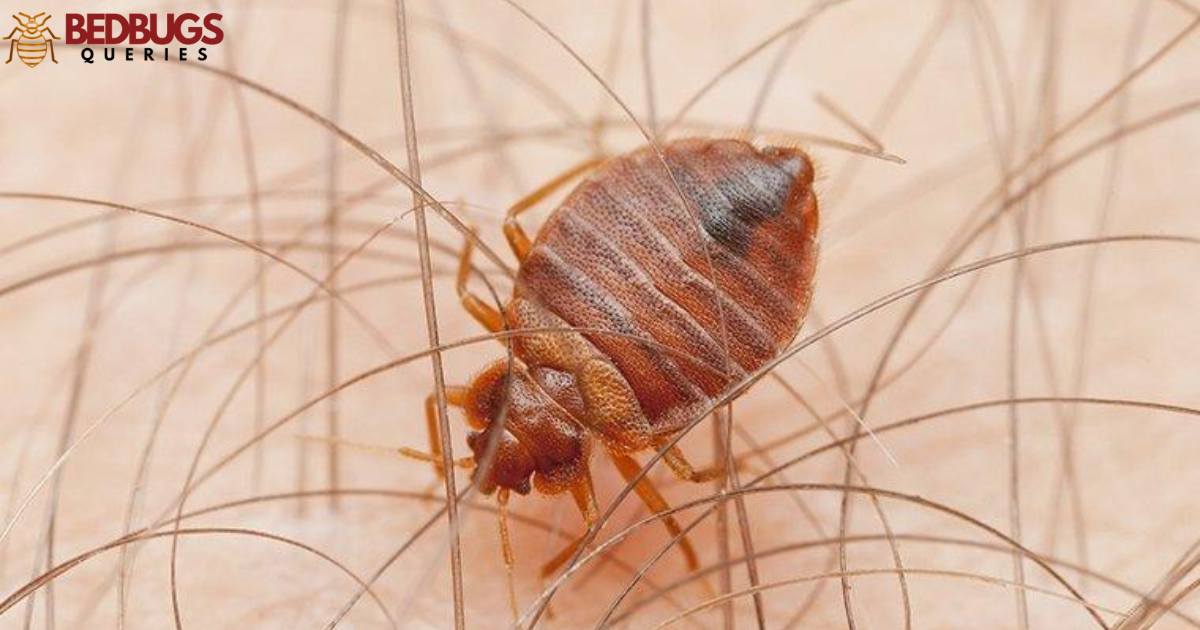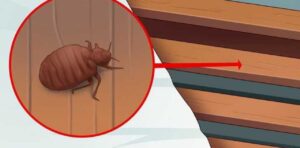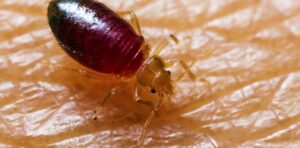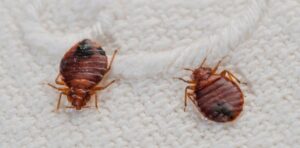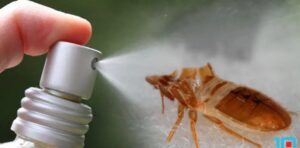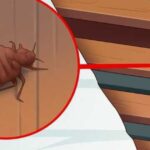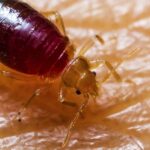If you’ve ever wondered about the effectiveness of Tempo in tackling bed bug infestations, you’re not alone. In this article, we’ll explore the question, Does Tempo Kill Bed Bugs? and provide you with a clear and concise answer to this common concern.
Bed bug infestations can be a real nightmare, disrupting your peace and comfort. Imagine finally putting an end to those sleepless nights and itchy mornings. The good news is that there’s hope, and Tempo might be the solution you’re seeking. In this article, we’ll delve into whether Tempo can help you win the battle against bed bugs.
Tempo is a well-known pesticide that many consider when dealing with bed bug problems. But to use it effectively, you need to understand its safety, application methods, and potential limitations. Join us as we explore the world of Tempo and its role in combating bed bug infestations.
How long does it take Tempo to kill bed bugs?
One of the first questions people ask when considering Tempo as a bed bug control solution is, How long does it take for Tempo to kill bed bugs? The answer to this question can vary depending on several factors. Tempo contains the active ingredient cyfluthrin, which is known for its rapid knockdown and long-lasting residual effects.
In many cases, Tempo can start killing bed bugs within minutes to hours of contact. The exact time it takes to eliminate an infestation depends on the size of the infestation, the application method, and whether the bed bugs have developed resistance to the active ingredient. For some, a single application of Tempo may be sufficient, while others may require follow-up treatments to completely eradicate the bed bugs.
Comparing Tempo to Other Bed Bug Control Methods
When it comes to bed bug control, you have various options to choose from. It’s essential to understand how Tempo stacks up against other bed bug control methods to make an informed decision.
Tempo vs. Chemical and Non-Chemical Approaches
Tempo is a chemical pesticide, and it’s vital to consider your preference for chemical or non-chemical approaches. While chemical pesticides like Tempo can be highly effective, they may not be suitable for everyone, especially those concerned about the potential health and environmental risks. Non-chemical methods, such as heat treatments and diatomaceous earth, offer alternatives for those looking to avoid pesticides.
Effectiveness of Tempo in Bed Bug Eradication
Tempo is known for its effectiveness in bed bug eradication. Research and studies have demonstrated its ability to control bed bug infestations effectively. However, it’s crucial to apply it correctly and follow the recommended guidelines for the best results. The effectiveness also depends on the level of infestation, so early detection and treatment are essential for success.
How to Use Tempo for Bed Bug Control
To achieve the best results when using Tempo for bed bug control, it’s essential to follow the proper application procedures.
| Aspect | Description | Tips for Success |
| Indoor Application | Apply Tempo in cracks, crevices, and seams | Clean and declutter the area |
| Outdoor Application | Use Tempo to prevent bed bugs from entering your home. | Focus on potential entry points |
| Dosage and Concentration Levels | Follow recommended concentrations. | Use appropriate mixing equipment |
| Mixing Procedures | Carefully mix Tempo as instructed. | Ensure proper uniformity. |
| Application Frequency and Timing | Initial treatment, followed by scheduled follow-ups | Monitor the effectiveness. |
| Targeting Problem Areas | Focus on furniture seams, folds, and cracks. | Inspect and treat problem zones. |
Proper Application of Tempo
- Indoor Application: Apply Tempo in areas where bed bugs are likely to hide, such as cracks and crevices, under furniture, and along baseboards.
- Outdoor Application: Tempo can also be applied outdoors to prevent bed bugs from entering your home.
Dosage and Mixing Instructions
- Concentration Levels: Follow the manufacturer’s recommendations for the appropriate concentration level, which can vary depending on the severity of the infestation and the type of surface.
- Mixing Procedures: Carefully mix Tempo as directed, and use the proper equipment to apply it.
Application Frequency and Timing
- Initial Treatment: Begin with an initial treatment and then monitor the situation. A follow-up treatment may be necessary based on the results.
- Follow-up Treatments: If bed bugs persist, repeat the application according to the recommended schedule.
Tips for Maximizing Tempo’s Effectiveness
- Cleaning and Preparation: Thoroughly clean and declutter the infested areas before applying Tempo to enhance its effectiveness.
- Targeting Problem Areas: Focus on areas where bed bugs are most likely to be hiding, such as seams, folds, and cracks in furniture and mattresses.
Will Tempo get rid of bed bugs?
The primary goal of using Tempo is to get rid of bed bugs. When used correctly, Tempo has a high success rate in eliminating bed bug infestations. However, it’s essential to be patient and persistent, as some infestations may require multiple treatments.
Curious about what would happen if bed bugs invade your space? Wondering if you’re financially protected against these pesky intruders? In this article, we will dive deep into the world of homeowners insurance and its coverage when it comes to bed bugs. “Does Homeowners Insurance Cover Bed Bugs?” is a common question, and we’re here to provide you with the answers you need.
Does Tempo SC Ultra kill bedbugs?

Tempo SC Ultra is a popular formulation of Tempo that is commonly used for bed bug control. It contains the same active ingredient, cyfluthrin, which is effective in killing bed bugs. When used according to the label instructions, Tempo SC Ultra can help eliminate bed bugs and provide residual protection against re-infestations.
Is Tempo Safe to Use Indoors?
When dealing with a pest problem, safety is a top priority. Tempo is a pesticide designed for indoor and outdoor use, but it should be used with caution, especially indoors. To ensure safety, follow these guidelines:
- Always read and follow the label instructions provided by the manufacturer. This will help you understand how to use the product properly.
- Ventilate the treated area by opening windows and doors. Ensure proper air circulation to minimize exposure to the pesticide.
- Keep pets and children away from treated areas until the product has dried completely.
- Use protective gear, such as gloves and a mask, when applying Tempo.
- Avoid direct contact with the pesticide on surfaces where you sleep, eat, or come into frequent contact.
Can You Spray Tempo on a Mattress?
While Tempo can be applied to various surfaces, including mattresses, it’s essential to do so carefully. Since mattresses are a place where you spend a significant portion of your time, you must take special precautions when treating them for bed bugs.
Here are some steps to consider: Vacuum your mattress thoroughly before applying Tempo to remove as many bed bugs and their eggs as possible. Spray Tempo lightly on the mattress, focusing on seams, folds, and crevices where bed bugs hide. Allow the mattress to dry completely before using it again.
You may want to consider using a mattress cover to seal in any remaining bed bugs. Remember, your safety is paramount, so be sure to follow the product’s instructions and exercise caution when using any pesticide on your mattress.
What Kills Bed Bugs 100 Percent?
While Tempo can be effective in killing bed bugs, no single treatment can guarantee a 100% kill rate. Bed bug infestations can be persistent, and the insects have developed resistance to some pesticides over time. Hiring a pest control professional with experience in bed bug treatment can be one of the most effective ways to address an infestation.
Bed bugs are sensitive to heat, and heat treatment can be a highly effective way to kill them. Professional exterminators often use specialized equipment to heat infested areas to a temperature that bed bugs cannot survive. Use mattress and box spring encasements to trap bed bugs and prevent them from reaching you while you sleep.
This can help reduce the population over time. Maintain a clean and clutter-free living environment. Frequent washing of bedding and vacuuming can help manage the problem. Be prepared to repeat pesticide applications and other treatments to ensure any surviving bed bugs are dealt with.
What Smells Do Bed Bugs Hate?
Bed bugs rely on their senses, particularly their sense of smell, to locate hosts for feeding. While they don’t necessarily “hate” certain smells, there are scents that can repel them or make it more challenging for them to find you. These scents include:
- Lavender: The scent of lavender is known to deter bed bugs. You can use lavender essential oil or sachets in your bedroom to help keep them at bay.
- Peppermint: Peppermint oil can be used as a natural repellent. It has a strong odor that can mask the scent of carbon dioxide, which bed bugs use to locate their hosts.
- Tea Tree Oil: Tea tree oil is another essential oil that bed bugs dislike. Mix it with water and use it as a spray around your home.
While these scents may help in repelling bed bugs, they should not be relied upon as the sole method of control. Combining them with other effective treatment methods is the key to success.
How Long Does Tempo Last?
The effectiveness of Tempo, like most pesticides, may diminish over time. Its residual activity can vary depending on factors such as the application method, surface type, and environmental conditions. In general, Tempo can remain effective for several weeks to a few months. To maintain control over a prolonged period, you may need to reapply it as directed by the product label or consult with a pest control professional for ongoing maintenance.
What Are the Side Effects of Tempo Pesticide?
While Tempo is an effective pesticide, it is essential to be aware of potential side effects. Some individuals may experience allergic reactions or respiratory irritation when exposed to pesticides. To minimize the risk of adverse effects:
- Use protective gear when applying Tempo, such as gloves, a mask, and protective clothing.
- Ventilate the treated area thoroughly to minimize exposure to fumes.
- Keep pets and children away from treated areas until the product has dried.
If you experience any adverse reactions after using Tempo, seek medical attention immediately and contact a poison control center.
What Is the Strongest Thing to Kill Bed Bugs?
When facing a severe bed bug infestation, it may be necessary to use stronger methods for their eradication. Professional pest control services often employ advanced techniques and products. Some of the strongest treatments used in pest control include:
- IGRs disrupt the bed bugs’ life cycle, preventing them from maturing and reproducing.
- These substances dehydrate bed bugs, effectively killing them over time.
- High-temperature steam can kill bed bugs and their eggs, making it a potent solution when applied correctly.
- Professional-grade pesticides, used by trained exterminators, can be highly effective in eliminating bed bug infestations.
Which Medicine Kills Bed Bugs Faster?
While the term medicine is not commonly used to describe bed bug treatments, there are no over-the-counter medications that can eliminate bed bugs quickly and effectively. Insecticides and professional treatments, rather than medicines, are the most suitable options for bed bug extermination. The speed of bed bug eradication depends on factors like the infestation’s severity, the chosen treatment method, and the thoroughness of the application.
FAQ’s
How does Tempo kill bed bugs?
Tempo kills bed bugs by coming into contact with them, affecting their nervous systems and leading to their eventual demise.
Is Tempo safe for humans and pets?
When used as directed, Tempo is generally safe for humans and pets, but it’s essential to follow safety guidelines to minimize any potential risks.
How long does it take for Tempo to start working?
Tempo can start killing bed bugs within minutes to hours of contact, depending on various factors, including the size of the infestation.
Can Tempo eliminate bed bugs in one treatment?
The number of treatments required to eliminate bed bugs with Tempo depends on the severity of the infestation. Some may require multiple treatments for complete eradication.
Are there non-chemical alternatives to Tempo for bed bug control?
Yes, non-chemical alternatives such as heat treatments and diatomaceous earth are available for those who prefer to avoid chemical pesticides when dealing with bed bugs.
Conclusion
In the battle against bed bugs, Tempo proves itself as a powerful weapon. Its active ingredient, cyfluthrin, quickly gets to work, making those unwanted pests a thing of the past. From the moment Tempo touches them, bed bugs’ days are numbered.
So, if you’ve been wondering, Does Tempo Kill Bed Bugs? the answer is a resounding yes. With proper application, patience, and diligence, you can reclaim your home from these persistent invaders. Say goodbye to sleepless nights and itchy bites Tempo is here to help you regain peace and comfort.

